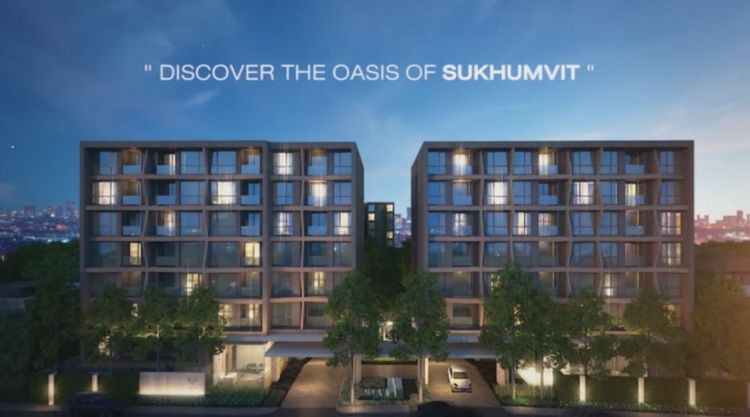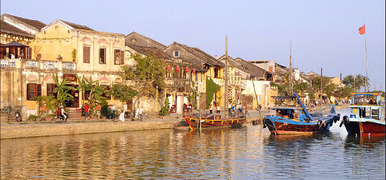A century ago Phrae was known as Thailand’s teak capital, having drawn half a dozen European timber companies to log the North’s then abundant teak reserves to ship abroad for use in steamers, train compartments and as a floor veneer.
Not much is left of Thailand’s natural teak forests today – in 1991 there were only an estimated 25,000 square kilometres of the tropical hardwood remaining – but in Phrae city, efforts are underway to at least preserve the country’s best collection of teak houses.
“If you look at Chiang Rai, Chiang Mai, Payao and other northern cities, they actually have fewer teak houses left than Phrae,” said Shinnaworn Chomphuphan, a founder of the Phrae Architectural Heritage Club.
“According to our latest survey there are about 100 old teak wood houses remaining in the city, of which about 20 are really beautiful.”
Phrae, situated 550km north of Bangkok, was arguably the last frontier for the British timber industry that first exploited the teak reserves of India, then moved on to Burma (now Myanmar) before extending their reach to the then pristine forests of northern Thailand in the late 19th and early 20th centuries.
In 1883, Britain won logging concession rights in Thailand’s northern provinces, which at the time were still under the semi-autonomous rule of local princes.
Phrae, one of the last northern provinces still rich in teak, became a business centre for a handful of British timber firms including Britain’s Borneo Company, the Bombay Burmah Trading Corporation, the Louis T Leonowens Company (owned by the son of the famous governess Anne Leonowens of King and I fame), the Anglo-Thai Company and Denmark’s East Asiatic Company.
When their concessions ran out the companies withdrew, but some left behind their teak-wood buildings.
The former office, director’s residence and clubhouse of the East Asiatic Company, which went on to become a successful trading company in Thailand, have all been turned into museums at Phrae’s Forestry Department branch office.
The former office of the Bombay Burmah Trading Corp, called the Green House, is also on a plot of Forestry Department land near the Yom River, which was used to transport the teak logs down to Nakorn Sawan and on to Bangkok.
Unfortunately, not much has been done on the upkeep of these historic teak-wood properties, now more than a century old. But Phrae’s teak heritage goes much deeper than the vestiges of the European logging industry.
One of the city’s leading attractions is Khum Chao Luang, the residence of Lord Piriyatheppawong, the former ruler of Phrae, built in 1892 using a mix of European and Thai architectural styles (the dungeon is definitely Thai style).
Lord Piriyatheppawong had two consorts, Bua Tha (the elder) and Bua Lai (the younger), who apparently did not get along. Bua Tha set up a separate residence in 1897 called Vongburi House which is now one of Phrae’s most popular “gingerbread house” buildings.
Gingerbread houses, characterised by highly decorative wood on the roof eves and window sills, were popular in Britain at the turn of the 20th century and caught on in the colonies.
Although Thailand was never a colony, European cultural influences were strong during the period, in Phrae and elsewhere.
“I think the architects of these houses were foreigners, and the labourers were probably Chinese who had run away from the railway construction projects,” said Shinnaworn, who is related to Wannee Vongburi, the current owner of the Vongburi residence.
The house was open to the public in 2006 and has become popular not only among tourists but as a setting for Thai television dramas and wedding parties.
Other “gingerbread” houses belong to the Phrae elite, include the Wichairacha House, the former residence of the Saensiriphan clan, and the residence of Prince Nan Chaiyawong, which one needs prior permission to visit.
Ordinary folk were not permitted to use teak to build their houses in Phrae until after 1902, when the system of local lordships was abolished and with it their sole rights to all teak forests. Thereafter, Phrae became the city of teak houses indeed since the hardwood was almost as plentiful as bamboo.
But with the imposition of a ban on private teak trading in the 1960s and a complete ban on all logging in 1989, demand for second-hand teak soared. According to architect-cum-preservationist Shinnaworn, more than 100 teak houses have been demolished in Phrae over the past two decades with their wood sold to contractors.
A handful of Phrae natives have pooled their efforts to turn the remaining houses into a major tourist attraction for the city.
“We don’t have any schools that teach carpenters and builders how to make these houses anymore, so the knowledge is disappearing,” Shinnaworn said.
“And if all the buildings are lost, the knowledge will die with them.”
Source: http://au.totaltravel.yahoo.com/news-opinions/news/a/-/13175648/campaign-to-save-thais-teak-houses/

